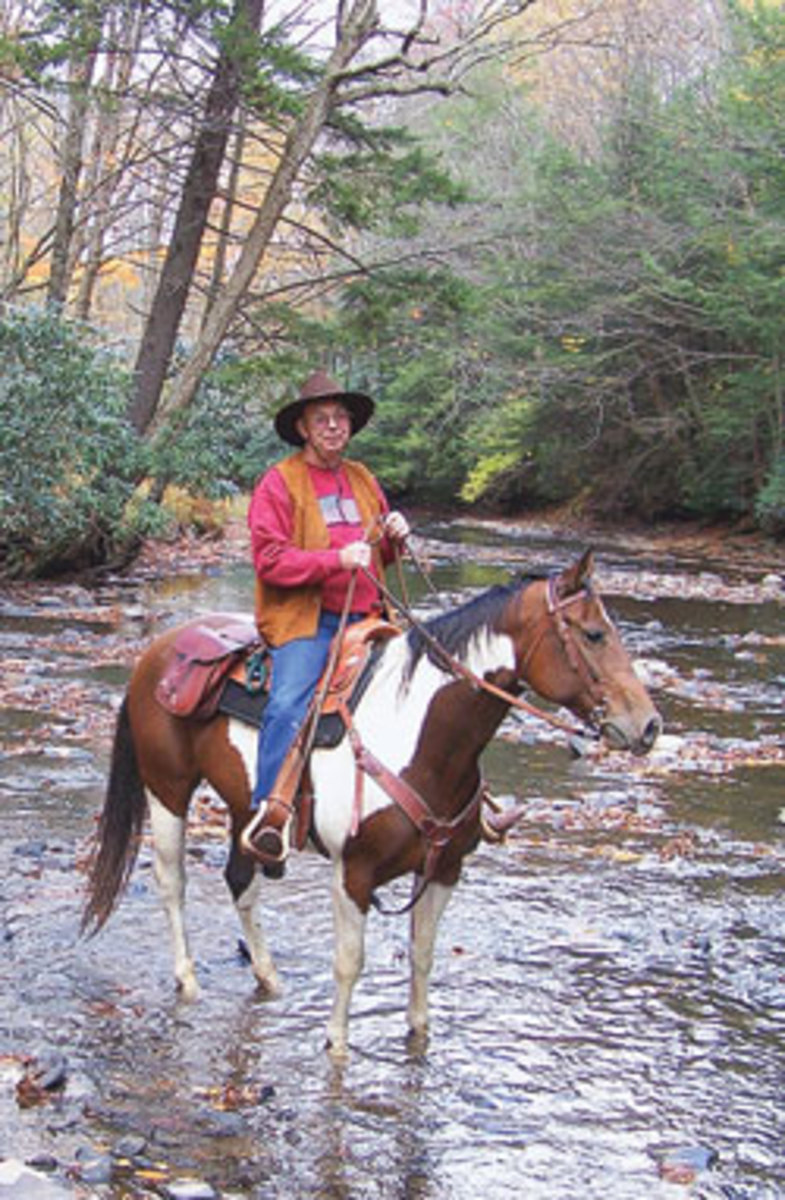
For several years now, as the mountain foliage begins its season-ending transition from a humble green to a myriad of autumn colors, my family has loaded up the horses and traveled south into Appalachia. Just like the opening lyric from John Denver’s song, Country Roads, I honestly believe the mountains of the Virginias can truly be described as “almost heaven,” especially when highlighted in their peak fall splendor.
This year, we decided to explore a portion of the nearly one-million-acre Monongahela National Forest of West Virginia, having ridden in the George Washington National Forest and Shenandoah National Park regions of old Virginia the past two seasons. I located a rental cottage near the town of Glady, situated very close to several mapped trails within the national forest.
Glady Fork Cabins provided us with an adjacent acre of fenced pasture for the horses. This would allow them to graze a bit and give them access to plenty of fresh drinking water, all within the confines of a safe, secure paddock.
Rainy Start
On a rainy October morning, we arrived at Glady Forks and picked up our cabin key, having enjoyed the scenery during the drive down through the West Virginia panhandle. I’d purchased a United States Forest Service map and contacted several ranger districts, but with the enormous amount of riding possibilities open to us, I took this brief opportunity to chat with cabin owner Gary Ransbottom about any recommended local trails.
Gary offered to walk with us on the trail leading down to the river to show us the best place to make the crossing into the national forest. We happily accepted, and agreed to meet him after we unloaded the horses and settled into our cabin. After a quick lunch, my dad and I caught two “reluctant horses” enjoying themselves in the pasture, and rode down to meet Gary at the water crossing. Unfortunately, within minutes, the clap of thunder rolled across the mountaintop, and the rain returned with a serious intent on soaking us right down to our boots.
I gave my young gelding, Hondo, a very brief introduction to the slope on the riverbank then quickly headed back for the cabin, hopeful to see brighter skies with the sunrise.
The Allegheny Trail
The following morning, we saddled up the horses and hit the trail early. It was a blustery day, but thankfully, the rain had finally ended and a much more seasonable temperature graced the mountain air.

We crossed the river and followed the Allegheny Trail north, paralleling the shoreline for several miles before the trail changed course up a steep grade along the hillside. After leveling off just long enough to give the horses a brief respite, the trail then headed back down toward the river to the turnoff for the eastern branch of the McCray Trail.
This route then took us up a hollow along the creek bed, providing scenic views of the Frazier and McCray Ridge lines above us. The trail eventually joined a primitive forest road, allowing us to make another three-mile loop before returning to McCray Creek.
On our return trip back down to the Allegheny Trail, we noticed several fresh-cut trees obviously felled by an industrious beaver. Perplexed as to how this evidence went unnoticed on our trip in, I tied my horse and scrambled down the hill through rhododendron. As I reached the river, I spotted the hidden pond created by the beaver dam. I snapped a few photos and climbed back up the hill to the trail.
We then continued on along the riverbank, making our crossing at the westward branch of the McCray Trail, continuing on until reaching Glady Road. This return route required us to ride several miles of hard road – my least favorite venue. But with little traffic and numerous meadows set beneath the colorful background of Shavers Mountain, it was still an enjoyable final leg of our ride.
There’s an interesting grave marker along this road that reads: “Here lies Peter Shaver~ Killed by Indians 1781~ This Mountain and Shavers Fork River are named in his honor.”
The following morning, as we packed our gear and loaded up the horses, the entire family agreed this was a wonderful trip with “stellar accommodations.” One that we’ll certainly repeat in years to come, as there are many more miles of trails yet to explore in the beautiful Monongahela National Forest of West Virginia.
For more information on trail riding in the Monongahela National Forest, call (304) 636-1800, or visitwww.fs.fed.us/r9/mnf/rec/horse back_opportunities.html. For more on Glady Fork Cabins, call (877) 636-6574, or visitwww.gladyforkcabins.com.




